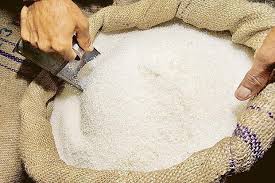ICRA on Telecom Sector
May 03, 2016 | 09:16 AM IST
May 03, 2016 | 09:16 AM IST

Moderation in capex intensity impacted quality of services of telcos; expected to improve going forward.
Over the last few quarters, the quality of services of the telecom operators (telcos), manifested by frequent call-drops experienced by users, has come under the scanner. According to Mr. Sabya sachi Majumdar, Sr.VP, Co-head Corporate Sector Ratings, ICRA Limited ICRA is of the opinion that the prominent reasons for deterioration in quality of services are (a) expanding data volumes, which have exerted pressure on the overall network, and (b) slowdown of capital expenditure, or capex on network roll out/upgradation by telcos. The capex intensity in turn was constrained over the last few years largely on account of the fact that telcos had to deploy funds towards spectrum acquisition. However, performance on QoS metrics is critical and the telcos cannot afford poor customer experience, especially in data services. The capex intensity has improved in FY2016 and the telcos are guiding higher capex going forward.This should drive the improvement in service quality from current levels.
As per the Quality of Service metrics (QoS metrics) published by TRAI, the deterioration in the service quality is noticed since September 2013,notwithstanding some improvement seen since December 2014. The deterioration in QoS metrics coincides with the period of strong growth in the mobile data traffic following the roll-out of data services by all telcos, attractive data tariffs, and increasing penetration of smartphones. For the ICRA Sample of Bharti Airtel Limited, Vodafone India Limited, Idea Cellular Limited, and Reliance Communications Limited, the data traffic has grown by 586% from 43.1 billion MBs in Q2 FY2013 to 359.4 billion MBs in Q2 FY2016. While spectrum has been added over this period, the mobile traffic (both voice and data)has outpaced the increase in spectrum holding.For instance, for the ICRA Sample, the data carried per MHz of spectrum has increased from a negligible level in June 2010 to 0.29 billion MBsin September 2015. Moreover, addition of spectrum does not automatically translate into higher capacity as network capex has to be incurred to put the spectrum to use.
The network capex for the industry witnessed a slowdown during FY2013 and FY2014, with capex to sales ratio at 13% and 12% respectively for the ICRA Sample, which partly explains the deterioration in QoS metrics from September 2013 onwards. The intensity of network capex for Indian telcosis lower than 20-22% range for many major telcos internationally and much lower than that of telcos in China where it is in excess of 30%. Deployment of funds towards spectrum acquisition has been an important factor which has constrained the capex intensity in India.According to Mr. Majumdar For the ICRA Sample, over the last five years, the cash outflows for spectrum acquisition comprised 44% of the total capex. However, network capex has picked up as reflected by improvement in capex to sales ratio to 16% and 17% for FY2015 and H1 FY2016 respectively. ICRA expects this momentum to be maintained in medium term.















